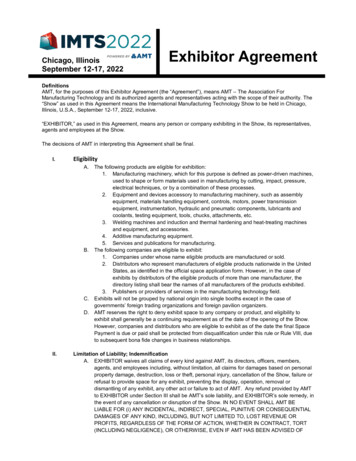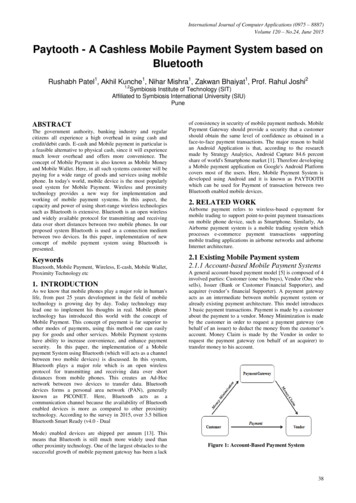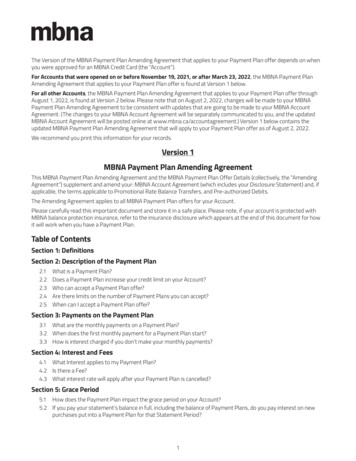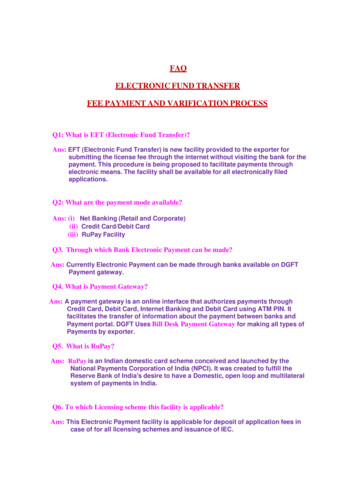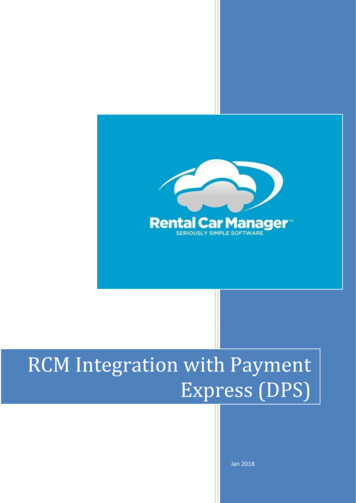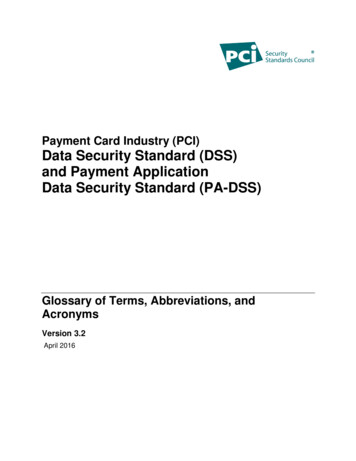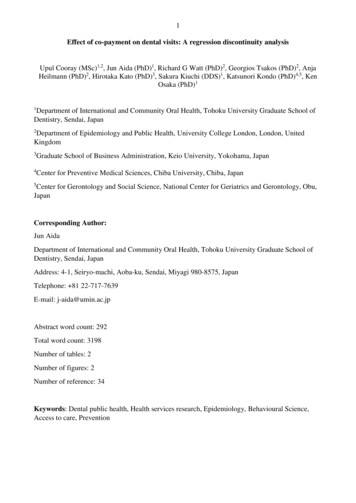
Transcription
1Effect of co-payment on dental visits: A regression discontinuity analysisUpul Cooray (MSc)1,2, Jun Aida (PhD)1, Richard G Watt (PhD)2, Georgios Tsakos (PhD)2, AnjaHeilmann (PhD)2, Hirotaka Kato (PhD)3, Sakura Kiuchi (DDS)1, Katsunori Kondo (PhD)4,5, KenOsaka (PhD)11Department of International and Community Oral Health, Tohoku University Graduate School ofDentistry, Sendai, Japan2Department of Epidemiology and Public Health, University College London, London, UnitedKingdom3Graduate School of Business Administration, Keio University, Yokohama, Japan4Center for Preventive Medical Sciences, Chiba University, Chiba, Japan5Center for Gerontology and Social Science, National Center for Geriatrics and Gerontology, Obu,JapanCorresponding Author:Jun AidaDepartment of International and Community Oral Health, Tohoku University Graduate School ofDentistry, Sendai, JapanAddress: 4-1, Seiryo-machi, Aoba-ku, Sendai, Miyagi 980-8575, JapanTelephone: 81 22-717-7639E-mail: j-aida@umin.ac.jpAbstract word count: 292Total word count: 3198Number of tables: 2Number of figures: 2Number of reference: 34Keywords: Dental public health, Health services research, Epidemiology, Behavioural Science,Access to care, Prevention
2Effect of co-payment on dental visits: A regression discontinuity analysisUpul Cooray1,2, Jun Aida1, Richard G Watt2, Georgios Tsakos2, Anja Heilmann2, Hirotaka Kato3Sakura Kiuchi1, Katsunori Kondo4,5, Ken Osaka11Department of International and Community Oral Health, Tohoku University Graduate School ofDentistry, Sendai, Japan2Department of Epidemiology and Public Health, University College London, London, UnitedKingdom3Graduate School of Business Administration, Keio University, Yokohama, Japan4Center for Preventive Medical Sciences, Chiba University, Chiba, Japan5Center for Gerontology and Social Science, National Center for Geriatrics and Gerontology, Obu,Japan
3AbstractDespite their prevalence and burdens, oral diseases are neglected in universal health coverage (UHC).In Japan, a 30% co-payment (out-of-pocket) by the user, and a 70% contribution by the UniversalHealthcare Insurance (JUHI) are required for dental and medical services. From the age of 70, anadditional 10% is offered by JUHI (co-payment - 20%, JUHI - 80%). This study aimed to investigatethe effect of cost on dental services use among older adults under the current JUHI system. Regressiondiscontinuity (RD) quasi-experimental method was used to investigate the causal effect of the JUHIdiscount policy on dental visits using cross-sectional data. Data were derived from the 2016 JapaneseGerontological Evaluation Study (JAGES 2016). This analysis contained 7,161 participants usingJUHI and aged 68-73 years who responded to questions regarding past dental visits. Analyses werecontrolled for age, sex, number of teeth, and equalised household income. Mean age was 72.1(SD 0.79) years for the discount eligible group and 68.9 (SD 0.78) years for the non-eligible group.During the past 12 months, significantly more discount eligible participants had visited dentalservices than non-eligible participants (66.0% vs. 62.1% for treatment visits, 57.7% vs. 53.1% forcheck-ups). After controlling for covariates the effect of discount eligibility was significant on bothdental treatment visits and dental check-ups (OR 1.36, 95%CI 1.32-1.40 and OR 1.49, 95%CI 1.441.54, respectively) in the RD analysis. Similar findings were observed in triangular kernel weightedmodels (OR 1.38, 95%CI 1.34-1.44 and OR 1.52, 95%CI 1.47-1.56, respectively). JUHI copayment discount policy increases oral health services utilisation among older Japanese. The priceelasticity for dental check-up visits appear to be higher than for dental treatment visits. Hence,reforming the UHC system to improve the affordability of relatively inexpensive preventive carecould further increase dental service utilisation in Japan.
4IntroductionThe Global Burden of Diseases Study 2017 revealed that oral disorders such as dental decay andperiodontal diseases remained highly prevalent global disorders since 1990 (James et al. 2018). Oraldiseases affect individuals’ quality of life by causing pain, discomfort, and inability to enjoy food(Sheiham and Steele 2001; Griffin et al. 2012). Moreover, the high prevalence of oral diseases causessubstantial economic and societal burden due to high treatment costs and disability (Birch and Listl2015; Bernabé et al. 2017). As with chronic conditions in general, the impact of oral diseases is higheron poorer and less educated populations of society (Watt et al. 2016; Rozier et al. 2017). UniversalHealth Coverage (UHC) is put forward as a global policy to enable all individuals and communitiesirrespective of their socioeconomic position, to receive health services without suffering financialhardship (WHO 2005). However, in many countries, oral health is usually isolated from mainstreamprimary healthcare services and neglected in UHC (Watt et al. 2019).According to WHO, countries can achieve greater UHC along three dimensions – by extendingpopulation coverage, by including services not previously covered, and by reducing cost sharing andfees (WHO 2013). Treatment of oral diseases is costly and often associated with high out of pocketexpenditure for service users (Bernabé et al. 2017; Dieleman et al. 2020). Thus, including oral healthservices in the UHC agenda would be one way of increasing coverage that could potentially minimisecost related inequalities in service use.Japan has one of the most generous mandatory universal health insurance schemes in the world.Japan’s universal health insurance (JUHI) policy is unique as it covers a wide range of dentaltreatments at a lower cost for its subscribers, compared to other countries with ‘universal oralhealthcare systems’ (Zaitsu et al. 2018). Among OECD countries only Japan (78%), Germany (68%),and Slovak Republic (53%) cover more than half of the dental care cost of adults (OECD 2019).Furthermore, Japan had reported the most frequent dental visits among OECD countries (OECD2011). In 2013, the prevalence of edentulousness among Japanese adults aged 65-74 years was 6.9%,which compares to an average of 13.3% among 15 European countries (Stock et al. 2016).However,inequalities in access to dental services still exist in Japan (Murakami et al. 2014). Therefore,assessing the cost sensitivity of services utilisation in a country where oral health is already a part ofthe UHC system could provide a basis for comparisons with cost effects in the absence of a UHCsystem for oral health.In general, the use of dental and medical services in Japan requires a 30% co-payment (out-of-pocket)by the user, and a 70% contribution by the JUHI. When JUHI subscribers reach the age of 70, anadditional 10% is offered, starting from the month after their birth month (JUHI - 80%, co-payment
5- 20%), which is a 33% reduction in co-payment (Sakamoto et al. 2018). This policy rule provides aunique opportunity to use the regression discontinuity (RD) method to investigate the causal effectof changes in out-of-pocket cost on dental attendance in Japan. The RD method is able to capture anobservable discontinuity in a treatment when the level of treatment changes abruptly at a cut-off valueof treatment assignment variable (Imbens and Lemieux 2008).Using RD, Shigeoka (2014) and Fukushima et al. (2016) found that the reduction of co-payments atthe age of 70 increased the utilisation of inpatient and outpatient medical services in Japan.Furthermore, Fukushima et al. (2016) found that the price responsiveness was high for services whichare at high demand in an aging society, such as orthopaedic and eye specialities. Although dentaltreatments are at high demand among older adults, neither of these studies investigated the utilisationof dental services. Ando and Takaku (2016) used a similar methodology to show the effect of copayment reduction on denture use and subjective chewing ability. However, the data were prior tothe implementation of the implementation of current co-payments rates in 2014 and they did notexamine the impact of co-payment on dental attendance.The aim of this study was to investigate whether the use of oral healthcare services differed beforeand after the discount JUHI eligibility, and if a significant difference was observed, to investigate thecausal effect of the JUHI discount policy on the observed difference.MethodsData SourceOur analyses are based on cross-sectional data from the Japan Gerontological Evaluation Study(JAGES) in 2016 (Kondo et al. 2018). The target population of the JAGES survey were communitydwelling older people aged 65 years or older who were functionally independent. The JAGES surveywas conducted from September 2016 to November 2017 and collected information on health,behaviours, and socio-economic characteristics via a postal survey questionnaire.The target population for JAGES in 2016 was 279,661 potential participants, of which 180,021 peopleresponded. Around 1/8 of the target population (34,567 people) received the questionnaire containingquestions regarding dental visits, and 22,282 people responded. Respondents with missing values foroutcome variables were not included in analyses. Characteristics of the participants with missinginformation for outcomes were compared and reported in Appendix Table 1. Observations withmissing values for other covariates were imputed using multiple imputation (Appendix Table 2).
6Participants who received social welfare benefits were excluded as they were eligible for free dentalcare without a co-payment. Figure 1 shows the selection flow of participants in this study.Ethical approvalThe JAGES survey was approved by the ethics committee of the National Center for Geriatrics andGerontology (No.992) and the ethics committee of Chiba University (No.2493).Outcome variables (Y)This study used two outcome variables that reflect dental attendance during the past 12 months.Outcome variables were derived from responses to the questions regarding the time of the latest dentaltreatment visits and dental check-up visits, with response options: 1. during the past 6 months; 2. Sixmonths to 1 year ago; 3. One to 3 years ago; 4. More than 3 years ago; 5. Never seen a dentist. Wecreated dichotomous variables for both treatment visits and check-up visits combining responses 1and 2 1 (during past 12 months); 3, 4 and 5 0 (more than 12 months ago).Forcing variable (Z)The forcing variable was used to assign observations into ‘treatment’ and ‘control’ groups around acut-off value of the forcing variable (Imbens and Lemieux 2008). The co-payment rate for dental carewas 30% among those aged 69 years or younger and 20% among those aged 70 years or older. Weused age as the forcing variable (Z), with age 71 years as the cut-off point. 71 years cut-off point waschosen as the outcome variables were referring to dental visits during the past 12 months. Hence,those who were 70 years at the time of survey were included in the control group (68, 69, 70 as ‘noneligible’ and 71, 72, 73 as ‘discount eligible’). People who turned 70 before 2014 continued to receivea co-payment discount under the old co-payment scheme (which was 33% generous than current rate).Therefore, we limited the maximum age as less than 74 years at the time of the survey to avoid theinclusion of participants falling under the old co-payment scheme. A derived age variable centeredon the cut-off value (age 71 years 0) was used in analyses.Treatment variable/ discount eligibility (T)A dummy treatment assignment variable (T) was created using the age cut-off; T 0 if Z cut-off, andT 1 if Z cut-off. This variable estimated the effect of discount eligibility in RD models.Covariates (X)A categorical variable indicating the number of remaining teeth (0, 1-9, 10-19, more than 20 teeth)and equivalised annual household income in Japanese yen ( 2 million, 2 to 3 million, 3 to 4
7million, 4 million) were used as covariates in the analyses. Equivalised income was calculated bydividing annual household income by the square root of number of family members. Furthermore, allmodels were adjusted for sex, and age (forcing variable).Statistical analysisDescriptive analysis presented the characteristics of the participants against discount eligibility. Thenwe adopted a regression discontinuity approach to estimate the effect of JUHI discount eligibility ondental attendance during the past 12 months. Following the methodology suggested by Jacob et al.(2012), we tested a variety of functional forms of the forcing variable (Z) to identify which fitted ourdata best based on F statistics and the robustness of estimates (Appendix Table 3 and 4). We usedboth linear and quadratic interaction forms of the forcing variable. In line with recommendations(Gelman and Imbens, 2019), we avoided higher order polynomials as it can lead to nonsensical results.The following logistic regression model was used to estimate the effect of discount eligibility on theprobability of dental attendance during the past 12 months.E[Yi Ti , Zi, Xi] exp [β0 β1Ti β2Zi β3Ti*Zi β4fZi β5fZi*T β6Xi Ɛ]Y Probability of a dental visit during past 12 monthsT Dummy treatment variable (1 if Z cut-off, 0 if Z cut-off)Z Forcing variable (age-centered variable)f polynomial function of Z (quadratic function)X Matrix of covariates (number of teeth, income, sex)β1 Measure the impact of discount eligibility (RD estimate)Ɛ Error termLogistic regression models were predicting the likelihood of dental attendance during the past 12months for dental treatments and for dental check-ups. To check the robustness of RD estimate, atriangular kernel weighted model, which assign more weight to observations closer to the cut-off wasused. We used 20 multiple imputed datasets for RD analyses. Then, a single mean estimate andadjusted standard errors were calculated (Rubin 2004). A supplementary complete case only analysisassess the robustness of imputed analysis (Appendix Table 5).Stata MP version 15.1 was used for analyses. RD plots were constructed using matplotlib pythonlibrary. The reporting of this study conforms to STROBE guidelines.ResultsTable 1 reports descriptive statistics on outcome variables and covariates, by discount eligibility. Themean age of discount eligible group was 72.1 (SD 0.79) years and 68.9 (SD 0.78) years for the noneligible group. Discount eligible participants reported higher prevalence of dental treatment and
8check-up visits, than non-eligible participants during the past 12 months (treatment visits- 66.0% vs.62.1%; p 0.001, check-up visits- 57.7% vs. 53.1%; p 0.001). The discount eligible group had higherproportions of edentulous and people in the lowest household income compared to the non-eligiblegroup.RD estimates and other covariates related coefficients from unweighted and triangular kernelweighted logistic models are reported as odds ratios (OR) in Table 2. Coefficients related to thedummy variable that indicates discount eligibility (T) measured the change in the probability of dentalattendance during the past 12 months between discount eligible and non-eligible groups, afteradjusting for covariates. In both unweighted and weighted models the discount eligibility (RDestimate) was associated with significantly higher prevalence of dental treatment visits and dentalcheck-up visits during the past 12 months. In the unweighted models discount eligibility increasedthe odds of treatment and check-up visits in the past 12 months with ORs of 1.36 (95%CI 1.32- 1.40)and 1.49 (95%CI 1.44-1.54), respectively. The effect of discount eligibility appeared to be slightlyhigher in triangular weighted models (Table 2). Being female and having more teeth were strongpredictors of treatment visits and check-up visits, irrespective of the effect of discount eligibility. Thehighest income group was more likely to have attended check-up visits during past 12 monthscompared to the lowest income group (unweighted model: OR 1.18, 95%CI 1.03-1.34 and weightedmodel: OR 1.13, 95%CI 0.98-1.30 ).Means of predicted probabilities of dental visits during the past 12 months for each age were plottedwith second order polynomial fit lines in Figure 2. Plots related to both treatment and check-up visitsshowed clear discontinuities in the probability of visits during the past 12 months, before and afterthe discount eligible age cut-off.DiscussionTo the best of our knowledge, this study is the first to determine the effect of cost burden on dentalattendance using a quasi-experimental method. We examined the impact of the JUHI discounteligibility on dental attendance within a population of Japanese adults in order to identify how a costrelated policy could influence UHC in oral health. The findings of our study suggest that a higherproportion of Japanese older adults in the 71-73 year age group used dental services in the last 12months compared to the 68-70 years old group. RD analysis revealed that the co-payment reductionat the age of 70 significantly contributed towards this higher prevalence of dental service use amongolder adults aged 71-73 years. Furthermore, the effect of the discount appeared to be slightly higherfor dental check-up visits than dental treatment visits. Our findings are consistent with findings of
9Shigeoka (2014) and Fukushima et al. (2016) regarding the effect of co-payment reduction onutilisation of inpatient and outpatient medical services in Japan.There are several strengths and limitations in this study. To determine the relationship between costburden and dental attendance, the RD method is one of the best approaches for causal inference as arandomized controlled trial is not feasible (Berk et al. 2010; Leeuwen et al. 2018). The healthcaresetting in Japan is uniquely favourable to the use of the RD method as most dental treatments arecovered by the universal health care insurance and the amount of co-payments do not vary under thisscheme. Hence, we were able to implement the RD method with confidence to isolate the effect ofco-payment reduction on dental attendance. The RD method could plausibly account for unmeasuredconfounders among discount eligible and non-eligible groups as they are assigned by a deterministicfunction of the age among a group of participants belong to a narrow age range (68-73 years).A limitation of the study was that our data did not contain birthdays or age in months, therefore wewere not able to identify the exact point at which participants became eligible for the discount. Thus,we used the age of 71 at the time of the survey as the cut-off for discount eligibility rather than theactual eligible age of 70, as we were referring to past dental visits in cross sectional data. However,this bias possibly attenuates rather than overestimate the impact of discount eligibility on dentalattendance. Although current welfare benefit receivers were excluded from the analyses, the historyof welfare benefit receipts was not available in the data and therefore could not be accounted for.Nevertheless, any bias caused by the inclusion of participants with a history of welfare benefit receiptwould have underestimated the effect of the co-payment discount, because those who receivedwelfare benefits would not have been expected to change their attendance behaviour based on thediscount. Another inherent problem of RD designs related to payment policies is the anticipatorybehaviour of participants. That is, when people anticipate a discount in the near future they tend towait until they become eligible (Figure 2). This anticipatory behaviour might lead to anoverestimation of the effect of discount eligibility. However, we believe that the 3-year bandwidthwe applied was long enough to reduce potential bias from anticipatory behaviour relating to dentalattendance. In fact, although the effect of bias from anticipatory behaviour could be stronger in thetriangular kernel weighted RD model, the difference between unweighted and weighted estimateswas small. Finally, we chose not to undertake sex stratified analysis due to the limited sample sizeand instead performed pooled analyses controlling for sex. Previous research reported that dentureutilisation with respect to the reduction of the co-payment in Japan was high for women but close tozero for men (Ando and Takaku 2016). However, our analyses suggested that although women
10utilised significantly more dental services than men, the effect of co-payment reduction wasconsistent among both sexes, further supporting the aforementioned analytical choice.Income is one of the most consistent predictors of dental attendance (Listl et al. 2014). In our study,we observed a statistically significant variation in dental check-up visits between the lowest and thehighest household income groups. Our findings also suggest that dental check-up visits may be moresensitive to co-payment reduction than treatment visits. Dental treatment visits may be associatedwith emergency care, whereas dental check-ups are indicative of a more routine pattern of attendanceand a more preventive approach. Therefore, treatment visits may be less affected by cost and mayhave a lower price elasticity than preventive visits. In fact, a previous study in Japan reported thatpreventive dental visits were more affected by the income of participants than curative treatment(Murakami et al. 2014). These results suggest that higher co-payment could reduce primarilypreventive rather than treatment dental visits. These discrete findings might not be generalisable toother countries as dental attendance behaviour would greatly be affected by the country context ofthe oral health care system. In Japan 78% of dental care costs were covered by the public insurance(OECD 2019). This percentage was the highest among OECD countries. Therefore, in countries withlower public insurance coverage for dental care, the effect of changes in co-payment would be smaller.However, the cost of services has repeatedly been shown one of the main barriers to dental attendancein many countries (Donaldson et al. 2008; Thompson et al. 2014; Vujicic et al. 2016).Our findings have clear policy implications. Globally Japan is considered as one of the best countriesregarding dental care coverage in UHC, with one of the lowest out-of-pocket dental expenditures(OECD 2011) and most frequent annual dental visits among all OECD countries (OECD.Stat 20102016). This study indicates that dental care access is affected by the level of co-payment even inJapan. Regardless of the good coverage, there are social inequalities in access to dental care in Japan(Murakami et al. 2014; Nishide et al. 2017). Therefore, actions to improve universal coverage fordental care should focus on reducing the cost and tackling underling inequalities. In addition, thepresent study shows that co-payments disproportionately affect preventive care. Hence, reducing copayments would potentially improve oral health service utilisation and help to re-orient oralhealthcare from being ‘treatment-oriented’ to ‘prevention-oriented’. Prevention-oriented oral healthUHC system could potentially benefit more people in terms of access to dental services in Japan.However, our study merely investigated if the co-payment reduction was meaningful in terms ofdental attendance. While an service related outcome on its own right, dental attendance is one, butclearly not the only, predictor of good oral health in older adults. It is important to further studywhether the cost reductions translate into meaningful improvements in oral health. Furthermore,
11future research could investigate the effect of the cost compared to other known predictors of dentalattendance such as dental anxiety, attitudes towards oral health, and availability and accessibility ofservices.ConclusionsOlder adults in Japan attend dental services in higher proportions after the reduction of co-payments.After controlling for number of teeth, household income, and sex, the co-payment reduction at theage of 70 significantly improved dental attendance. Cost elasticity for preventive dental visits seemsto be higher than for treatment visits.AcknowledgmentsThe authors gratefully acknowledge the participants in the JAGES 2016 survey. JAGES 2016 wassupported by JSPS (Japan Society for the Promotion of Science) KAKENHI Grant nt(H28-Choju-Ippan-002,H30 Junkankitou Ippan 004), Japan Agency for Medical Research and Development P18le0110009,JP19dk0110034,JP19dk0110037), Open Innovation Platform with Enterprises, Research Institute and Academia(OPERA, JPMJOP1831)from the Japan Science and Technology (JST), and the Research Fundingfor Longevity Sciences from National Center for Geriatrics and Gerontology (29-42, 30-22). U.Cooray is supported by Japanese Government (MEXT) Scholarship.The authors declare no potential conflicts of interest with respect to the authorship and/orpublication.FundingThe authors received no financial support for the research, authorship, or publication of this articlefrom any funding agency in the public, commercial, or non-profit sectors.Author contributions:U. Cooray: Contributed to conception, design, performed all statistical analyses and interpretation,and drafted the manuscriptJ. Aida: Contributed to conception, design, data acquisition and interpretation, critically revised themanuscriptR.G. Watt, G. Tsakos: Contributed to interpretation and critically revised the manuscriptA. Heilmann: Contributed to draft manuscript and critically revised the manuscript
12H. Kato: Contributed to analysis and critically revised the statistical analysesS. Kiuchi: Contributed to conception and design, and critically revised the manuscriptK. Kondo: Contributed to data acquisition, and critically revised the manuscriptK. Osaka: Contributed to conception and critically revised the manuscriptAll authors gave their final approval and agree to be accountable for all aspects of the work.All data used are from the JAGES 2016 survey. Data requests can be addressed to the JAGES datamanagement committee via e-mail: dataadmin.ml@jages.net. All JAGES datasets have ethical orlegal restrictions for public deposition due to inclusion of sensitive information from humanparticipants.ReferencesAndo M, Takaku R. 2016. Affordable false teeth: The effects of patient cost sharing on dentureutilization and subjective chewing ability. BE J Econ Anal Policy. k RA, Barnes G, Ahlman L, Kurtz E. 2010. When second best is good enough: A comparisonbetween a true experiment and a regression discontinuity quasi-experiment. J Exp Criminol.6(2):191–208. doi:10.1007/s11292-010-9095-3.Bernabé E, Masood M, Vujicic M. 2017. The impact of out-of-pocket payments for dental care onhousehold finances in low and middle income countries. BMC Public Health. 17(1):109.doi:10.1186/s12889-017-4042-0.Birch S, Listl S. 2015. The Economics of Oral Health and Health Care. SSRN Electron J.(MaxPlanck Institute for Social Law and Social Policy Discussion Paper No. 07-2015).doi:10.2139/ssrn.2611060.Dieleman JL, Cao J, Chapin A, Chen C, Li Z, Liu A, Horst C, Kaldjian A, Matyasz T, Scott KW, etal. 2020. US Health Care Spending by Payer and Health Condition, 1996-2016. JAMA - J Am MedAssoc. 323(9):863–884. doi:10.1001/jama.2020.0734.Donaldson AN, Everitt B, Newton T, Steele J, Sherriff M, Bower E. 2008. The effects of socialclass and dental attendance on oral health. J Dent Res. hima K, Mizuoka S, Yamamoto S, Iizuka T. 2016. Patient cost sharing and medicalexpenditures for the Elderly. J Health Econ. 45:115–130. doi:10.1016/j.jhealeco.2015.10.005.Gelman A, Imbens G. 2019. Why High-Order Polynomials Should Not Be Used in RegressionDiscontinuity Designs. J Bus Econ Stat. 37(3):447–456. doi:10.1080/07350015.2017.1366909.Griffin SO, Jones JA, Brunson D, Griffin PM, Bailey WD. 2012. Burden of oral disease amongolder adults and implications for public health priorities. Am J Public Health. ns G, Lemieux T. 2008. Regression Discontinuity Designs: A Guide to Practice. J Econom.142(2):615–635. doi:https://doi.org/10.1016/j.jeconom.2007.05.001.
13Jacob R, Zhu P, Somers M-A, Bloom H. 2012. A Practical Guide to Regression Discontinuity.[accessed 2020 Mar 27]. www.mdrc.org.James SL, Abate D, Abate KH, Abay SM, Abbafati C, Abbasi N, Abbastabar H, Abd-Allah F,Abdela J, Abdelalim A, et al. 2018. Global, regional, and national incidence, prevalence, and yearslived with disability for 354 Diseases and Injuries for 195 countries and territories, 1990-2017: Asystematic analysis for the Global Burden of Disease Study 2017. Lancet. 2279-7.Kondo K, Rosenberg M, WHO. 2018. Advancing universal health coverage through knowledgetranslation for healthy ageing: lessons learnt from the Japan gerontological evaluation study. WorldHealth Organization.Leeuwen N Van, Lingsma HF, Mooijaart SP, Nieboer D, Trompet S, Steyerberg EW. 2018.Regression discontinuity was a valid design for dichotomous outcomes in three randomized trials. JClin Epidemiol. 98:70–79. doi:10.1016/j.jclinepi.2018.02.015.Listl S, Moeller J, Manski R. 2014. A multi-country comparison of reasons for dental nonattendance. Eur J Oral Sci. 122(1):62–69. doi:10.1111/eos.12096.Murakami K, Aida J, Ohkubo T, Hashimoto H. 2014. Income-related inequalities in preventive andcurative dental care use among working-age Japanese adults in urban areas: A cross-sectional study.BMC Oral Health. 14(1). doi:10.1186/1472-6831-14-117.Nishide A, Fujita M, Sato Y, Nagashima K, Takahashi S, Hata A. 2017. Income-related inequalitiesin access to dental care services in Japan. Int J Environ Res Public He
1 Effect of co-payment on dental visits: A regression discontinuity analysis Upul Cooray 1,2(MSc) , Jun Aida (PhD)1, Richard G Watt (PhD)2, Georgios Tsakos (PhD)2, Anja Heilmann 2(PhD) , Hirotaka Kato (PhD)3, Sakura Kiuchi (DDS)1, Katsunori Kondo (PhD)4,5, Ken Osaka (PhD)1 1Department of International and Community Oral Health, Tohoku University Graduate School of
